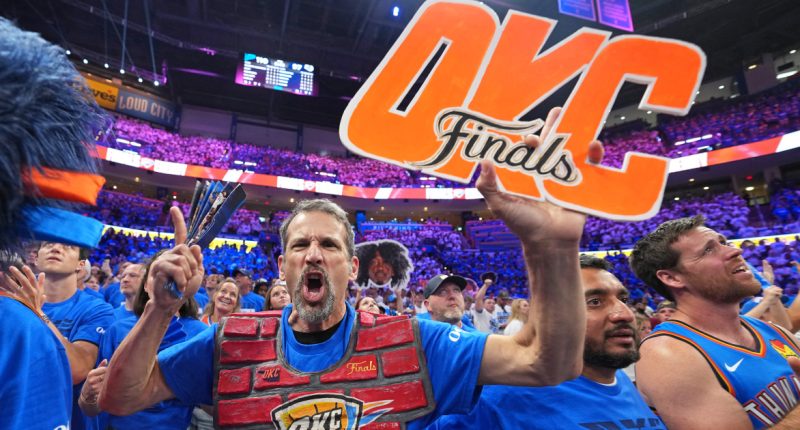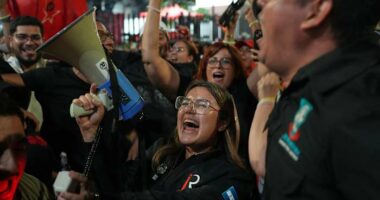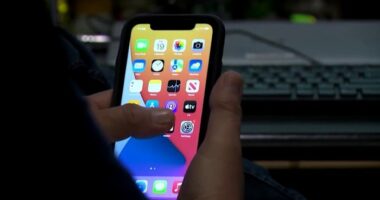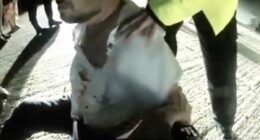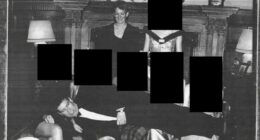Share this @internewscast.com
OKLAHOMA CITY — 6501 S. Meridian Ave. is not the type of place where a championship parade would be expected to kick off.
Just twenty minutes from downtown Oklahoma City, alongside a scarcely trafficked route near the city’s international airport, lies a chain-link fence dividing a modest parking area from an airplane hangar and a small runway.
If the Thunder clinches the NBA championship on Thursday night during Game 6 of the NBA Finals in Indianapolis, the ensuing celebration throughout Oklahoma will metaphorically, and practically, commence right here. This is where every Thunder road trip concludes and the city’s affection for the team truly begins.
Devin Newsom first made his way to South Meridian to stand at that chain-link fence in 2012. The Thunder, having relocated from Seattle to Oklahoma City just four years prior, were in the midst of a thrilling playoff surge that captured the hearts of their new fanbase. As a Thunder employee at the time, Newsom was eager to celebrate an important playoff victory and inquired among his team connections about the arrival of the plane bringing back coaches and players from Dallas. Word spread, and when the Thunder disembarked their charter jet in the early hours, they were met with a wave of cheers.
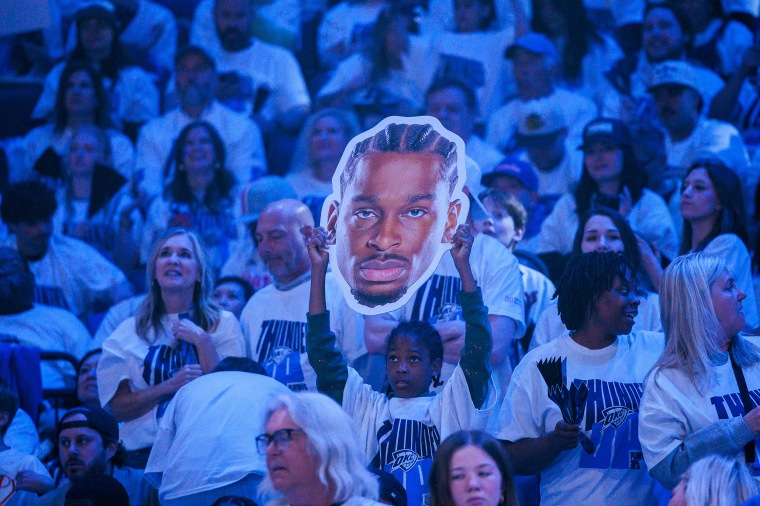
Newsom has been organizing “airport welcomes,” as they are called, ever since.
“What it really comes down to,” Newsom said, “is coming together as a community to support something bigger than us.”
Now it is not uncommon to see several hundred people waiting at the fence alongside Newsom, who also livestreams the arrivals to Thunder fans living abroad, who watch as players approach the fence to sign autographs and slap hands. On May 27, after a gritty win in Minnesota during the Western Conference finals, several dozen Thunder fans even endured through a thunderstorm and a two-hour delay that pushed back Oklahoma City’s arrival until 3 a.m. to welcome their team home.
“And it was a weekday,” Thunder wing Ajay Mitchell said. “So I was like, man, they’re going to wake up and go to work right after that.”
Thunder guard Cason Wallace, referring to his college team’s large, passionate fan base, said: “Coming from Kentucky, we had fans waiting on us. But it wasn’t 3 in the morning.”
Cities have rallied behind their teams since sports began, yet in Oklahoma City, what is atypical is the degree to which that relationship is not one-sided. Fans, city officials and the team itself are intertwined more closely than perhaps any other NBA market. Fans show up for the Thunder in uncommon ways — during late nights at the airport, yes, but also at the ballot box, where a 2023 measure to use public money to help fund a new Thunder arena scheduled to open in 2028 passed with 71% of the vote.
The team has returned the embrace.
Sam Presti, the team’s top basketball executive since 2007, “may be the only GM in America who texts with the mayor,” the mayor himself, David Holt, said with a laugh in his office, which is decorated with a framed Thunder jersey. It hangs to the left of the desk where, this week, Holt signed an agreement that will keep the team in Oklahoma City through 2053 and could extend up to 15 additional years.
Holt said Presti asked him in 2020 to record a video to explain the city’s racial-justice efforts to players amid national protests as the team was entering the delayed NBA playoffs held near Orlando, Florida. And a year earlier, Holt had used Presti’s direct line to make a request of his own. One year into his term, he was making plans to become the city’s first mayor to walk in its LGBTQ Pride parade. He wanted to ask whether Presti would show support and walk in the parade, too, and Presti agreed.
“Where else would that even mean anything?” Holt said. “Like a sports team, who cares? But in this context here, in our unique situation, it was just as important that the Thunder did that as it was that the mayor did that, and for us to do it together kind of communicated everybody is doing this. I say that to say that they’re a cultural institution in the city that I think we, if we want something to receive credibility, we will think about including the Thunder in that conversation. Whereas I think in a lot of markets, professional sports teams are just another entertainment option.”
The Thunder are Oklahoma’s only big-league option — the scarcity has taken a region divided by college allegiances and coalesced that fandom behind one franchise. Winning, of course, has only deepened the support; since 2010, the Thunder own the NBA’s second-best record, and this trip to the Finals is the team’s second in that span.
But to Newsom, the team’s choices to take part in the community and the circumstances of its arrival have also stoked a loyalty that has kept the region exceptionally possessive of its team.
New Thunder employees, players included, are required to go eight blocks north of the Thunder’s home arena and tour the Oklahoma City National Memorial & Museum. There, they learn about the 1995 bombing that destroyed a federal building and killed 168 people and the rebuilding that followed.
“The Thunder would not be in Oklahoma City without the response that took place on April 19, 1995, and without the sacrifices and the efforts that were made to rebuild this city,” Presti said last fall at a banquet for the memorial.
“This is why we ask all of our new players and all of our new staff to go through the museum and memorial to come in contact with the stories about the recovery, the efforts, the optimism and the compassion to connect the dots as to why people are so passionate about Oklahoma City.”
On the bombing’s 25th anniversary, the team debuted jerseys designed as a nod to the memorial.
“You want to know the history,” reserve Jaylin Williams said. “When you see how connected we are with the community in basketball, that’s how connected the community was when the tragedy happened here.”
Before 1995, mentioning you were from Oklahoma City to a London cabdriver would have evoked a blank stare, Holt said. After the bombing, the city evoked a different association.
“Though we are rightfully proud of our response to that, it’s not really something you can build a brand on,” Holt said. “We were always looking for something else to be identified with.”
The city got that opportunity in 2005, after Hurricane Katrina left New Orleans unable to host the NBA’s Hornets, and the team temporarily relocated to Oklahoma City. Team employees moved into the Crimson Park Apartments a half-hour south of the city, in Norman, and team operations were run out of a Sheraton hotel a block from the arena in what became a trial run to gauge the city’s readiness to support a major-league team.
It became real in 2008, when an Oklahoma-based ownership group bought the Seattle SuperSonics and moved the team. The relocation devastated fans in Washington and left new Thunder fans resolving not to squander their opportunity to be elevated to what Holt called “a new tier” of city.
“We grew up with the team, because the team was brand new,” Newsom said. “We checked all the Seattle SuperSonics stuff at the door. That was way back; that had nothing to do with us. We don’t claim any other history, we don’t claim their first title, their only title. We don’t care about any of that. What we care about is what has happened since the team came to Oklahoma and how we’ve come together to support an amazing, amazing franchise.”
That support can be distilled to a number. Of the proposed $900 million price tag to build the team’s new arena, $50 million came from the team’s owners, but the vast majority will come from taxpayers. A sales tax passed in 2019 will contribute $70 million, and the remaining $700 million and more will be funded by a 1-cent sales tax that will run for six years.
Getting voters to commit public money to stadium construction is rare, said J.C. Bradbury, an economist at Kennesaw State University in Georgia and expert on stadium subsidies. Like Bradbury, other economists have been skeptical of the price tag and economic benefits of a new stadium, but Holt — who can quickly rattle off statistics that there are 18 markets larger than Oklahoma City, the country’s 42nd-largest metro area, that do not have NBA teams — said it was critical for the city to become a partner with the team.
The shine from being part of the NBA has led Bricktown, a neighborhood just blocks east of the current arena, to fill with restaurants and new hotels. He described his shock at once seeing a Thunder jersey while he was touring the Acropolis in Athens, Greece.
“When I grew up here in the ’80s and ’90s, it felt like growing up in an alternate universe outside of American pop culture,” Holt said. “So now to be a place where things happen, a place that people are interested in, a place that people are just flat-out aware of, because, as I often say, like you, you are not very likely to live in, invest in or visit a city you’ve never heard of. So just the fact that billions of people will pay a passing glance to what happens over the next two weeks in the NBA Finals has a very material benefit for us. …
“As a mayor, I’m selling our city constantly, and I can guarantee you, especially after these Finals, every conversation for the next five years will start with Thunder. And you may think that’s superficial, but it absolutely ends up having a real-world positive economic impact in OKC, and we have seen it.”
Fans and players say that bond is not superficial. When free agent Carmelo Anthony signed with the team in 2017, fans waited at the fence wearing hoodies with their long sleeves cut off, a nod to Anthony’s signature sartorial look.
And whether the Thunder win or lose Game 6 in Indianapolis, Newsom will still track the tail number of the team’s charter flight, send out the estimated arrival time on social media and wait at the fence at South Meridian for the season’s final “airport welcome.” It is expected to be the biggest yet.
